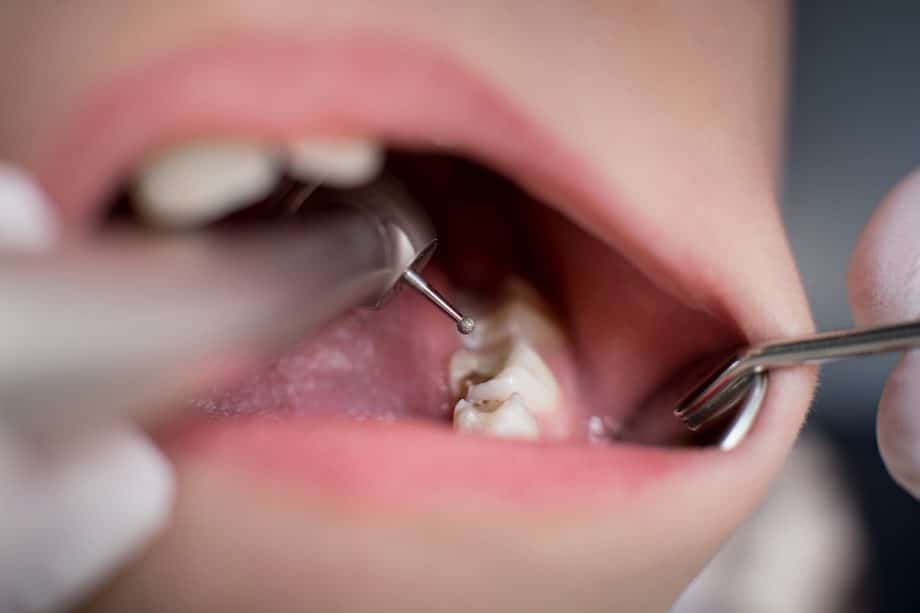If you discover a cavity in your child’s tooth, don’t be alarmed. Don’t beat yourself up over it, either. Dental cavities, also called caries, are common in children. Per the Centers for Disease Control (CDC), more than half of children between the ages of 6-8 have or previously had a cavity in a baby tooth. Since your child will eventually lose their baby teeth (also called primary teeth), you may wonder if it needs to be treated. In some cases, it may not. In other cases, cavities in baby teeth will require fillings, nerve treatment, crowns or extractions. Read on to learn how pediatric dentists determine whether or not to restore a cavity in a baby tooth.
How Soon Will the Child Lose the Tooth?
Cavities that develop when children are very young, and therefore years away from losing the tooth or teeth, will likely need to be addressed. Cavities result from tooth decay, and decay can spread easily in the affected tooth and to nearby teeth. However, if a minor cavity is discovered by your pediatric dentist when the tooth is close to falling out, it may not require any dental treatment as it may be ok to monitor the tooth until it falls out.
How Deep is the Cavity in Your Child’s Tooth?
The larger the cavity in a child’s tooth, the more likely it is to cause pain. This is because a deep cavity can reach the pulp chamber (also known as the nerve) of the tooth, leading to an infection known as pulpitis. Any deep cavities in a baby’s teeth should be treated as quickly as possible. If a cavity is too big to restore with a filling, a dental crown with or without nerve treatment may be necessary.
Can the Cavity Be Treated With an Alternative to a Filling?
Cavities that are detected very early may respond well to silver diamine fluoride treatments. These treatments can promote the remineralization of a baby tooth. If your dentist finds signs of an emerging cavity, this non-invasive treatment may eliminate the need for a filling.
How Pediatric Dentists Treat Cavities in Baby Teeth
If your child needs to have a cavity filled, the material used to fill the cavity will be free of BPA and amalgam. White composite fillings will protect the tooth from further decay, and eliminate any pain from a toothache.
If your child’s cavity has reached the nerve of the tooth, a procedure known as a baby root canal may be necessary. This procedure involves removing the pulp of the tooth and protecting the tooth by capping it with a dental crown (which can be made of stainless steel or zirconia).
Unfortunately, teeth with very large cavities that have caused teeth to crack or develop an oral infection may need to be extracted. Extraction is always a last resort, and your pediatric dentist may recommend that your child be fitted for a space maintainer to ensure that the adult tooth eventually has enough space to erupt.
Tips for Preventing Cavities in Children
Good oral hygiene is the best defense when it comes to tooth decay. Children need to brush their teeth twice a day and floss once daily at night. Depending on the age and dexterity of the child, parents may need to brush their children’s teeth. Seeing a pediatric dentist twice yearly for cleanings and exams is also essential to maintaining good oral hygiene.
Proactive measures can also help prevent cavities. For example, your pediatric dentist may recommend occasional fluoride treatments to strengthen enamel, making the teeth less susceptible to decay. Dental sealants may also be recommended for children with deep grooves or crevices on the surface of the molars.
Book Your Child’s Dental Cleaning and Exam in Albuquerque
If your child hasn’t been to the dentist yet, or if it’s been longer than six months since they’ve had a cleaning, request an appointment with Dr. Spencer Tasker at ABQ Pediatric Dentistry. If your child is experiencing pain, call 505-888-3520 and notify our staff. We will prioritize your child’s care and make sure we help get your child as soon as possible.

